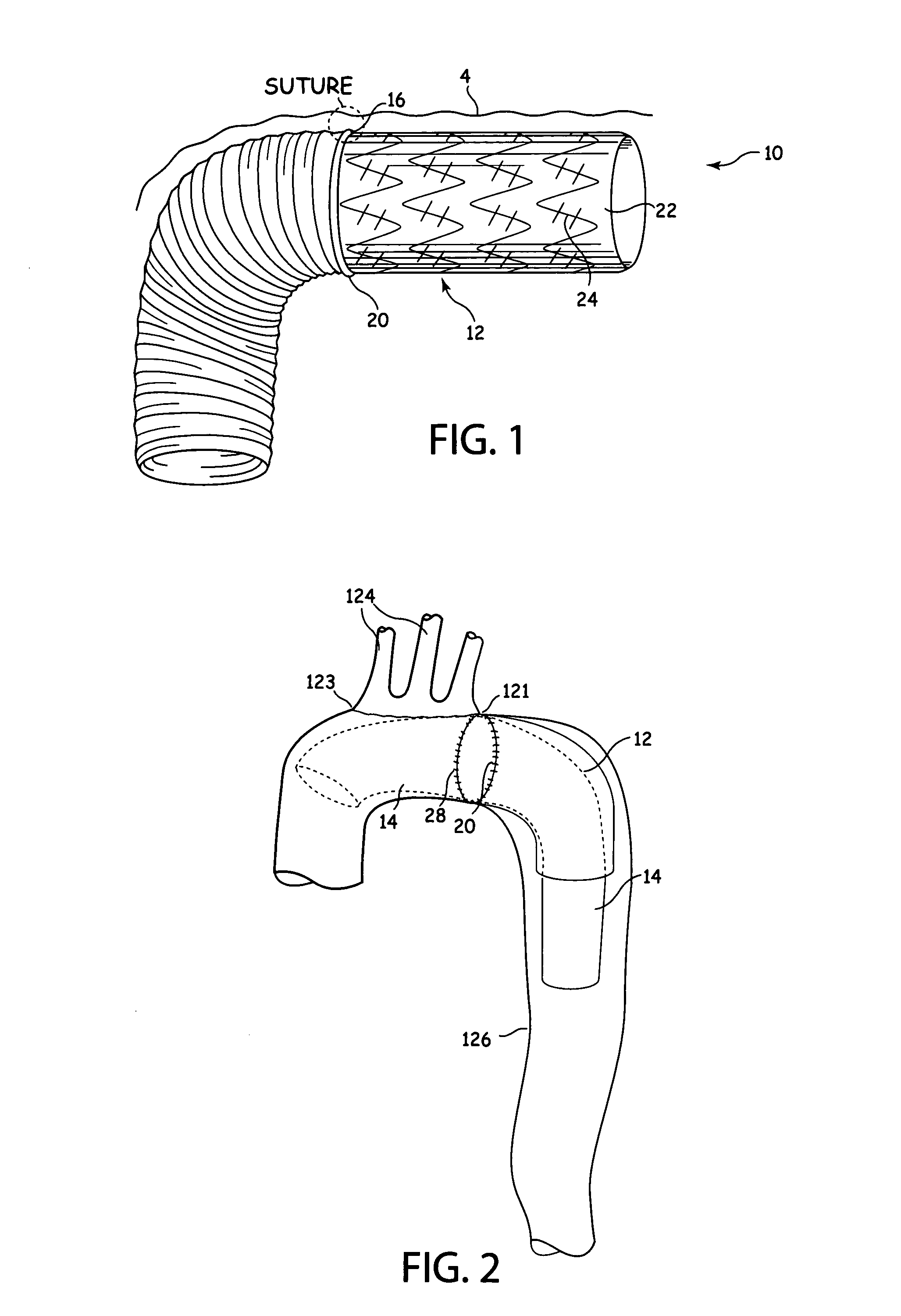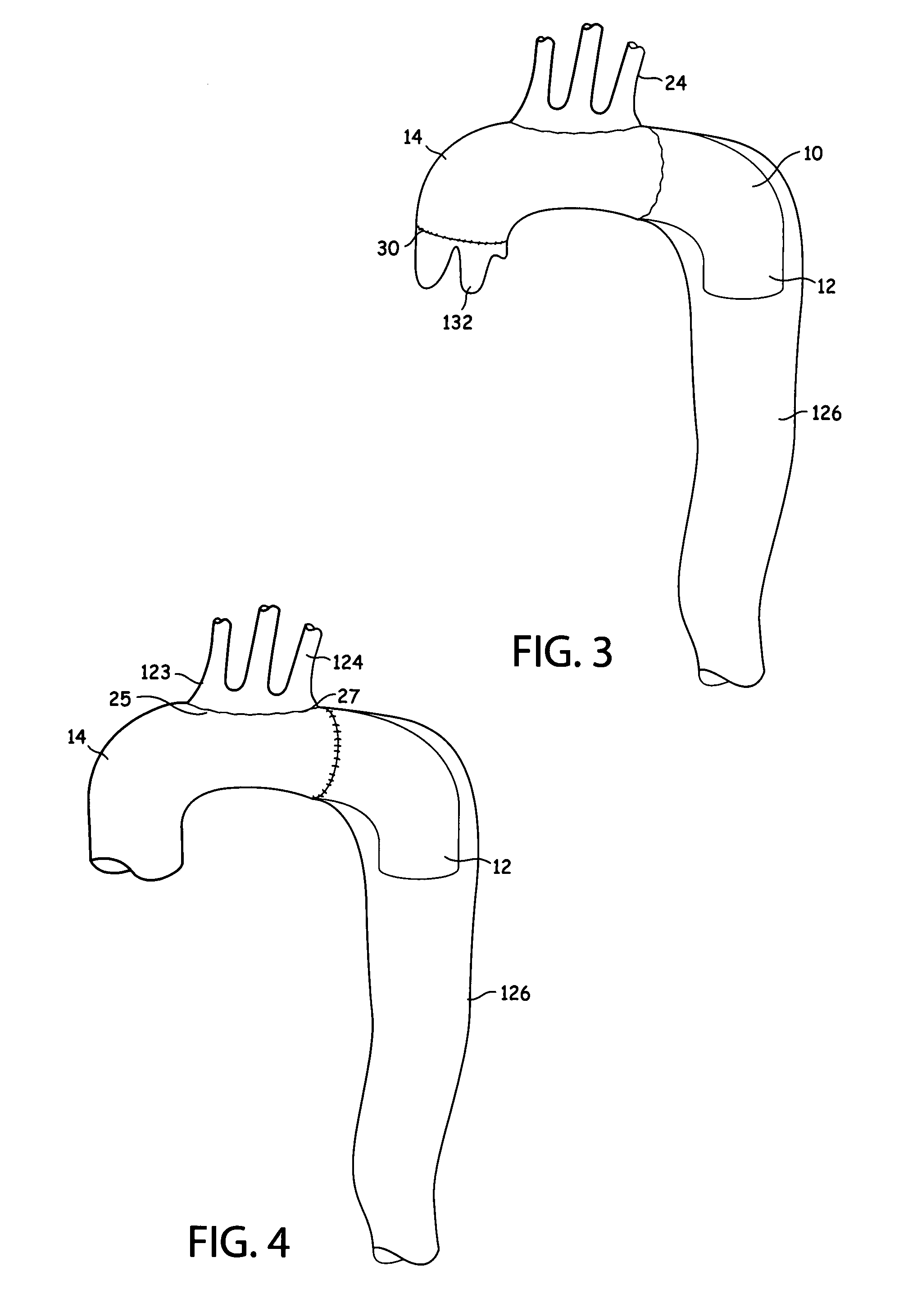Aortic graft design
a graft and design technology, applied in the field of aortic graft devices, can solve the problems of increasing the risk of complications associated with an operation, poor health, and sudden death of aortic artery blood loss, and achieve the effects of reducing bending forces, facilitating handling and placement of graft devices, and facilitating blood tight connection
- Summary
- Abstract
- Description
- Claims
- Application Information
AI Technical Summary
Benefits of technology
Problems solved by technology
Method used
Image
Examples
Embodiment Construction
[0029]Referring to FIG. 1, the aortic graft implant 10 shown includes an aortic graft section 12 and a corrugated or elephant trunk section 14. The aortic graft section 12 is tubular and has a proximal end 16 with a proximal opening 18 (not visible in FIG. 1). In the present context proximal is used to denote locations closer to the heart or in an upstream direction relative to aortic blood flow, whereas distal denotes locations more distant from the heart. The graft section 12 and any possible graft extensions thereto which are provided can be made of a pliable material, such as expanded polytetrafluoroethylene (PTFE), woven polyester or another biocompatible material, for long term stability in the vascular system. Graft materials are well known in the art and the material can also include biodegradable strands as part of the material. The graft section 12 is at least partially non-corrugated. It can have corrugations along part of its length and / or circumference but it is prefera...
PUM
 Login to View More
Login to View More Abstract
Description
Claims
Application Information
 Login to View More
Login to View More - R&D
- Intellectual Property
- Life Sciences
- Materials
- Tech Scout
- Unparalleled Data Quality
- Higher Quality Content
- 60% Fewer Hallucinations
Browse by: Latest US Patents, China's latest patents, Technical Efficacy Thesaurus, Application Domain, Technology Topic, Popular Technical Reports.
© 2025 PatSnap. All rights reserved.Legal|Privacy policy|Modern Slavery Act Transparency Statement|Sitemap|About US| Contact US: help@patsnap.com



